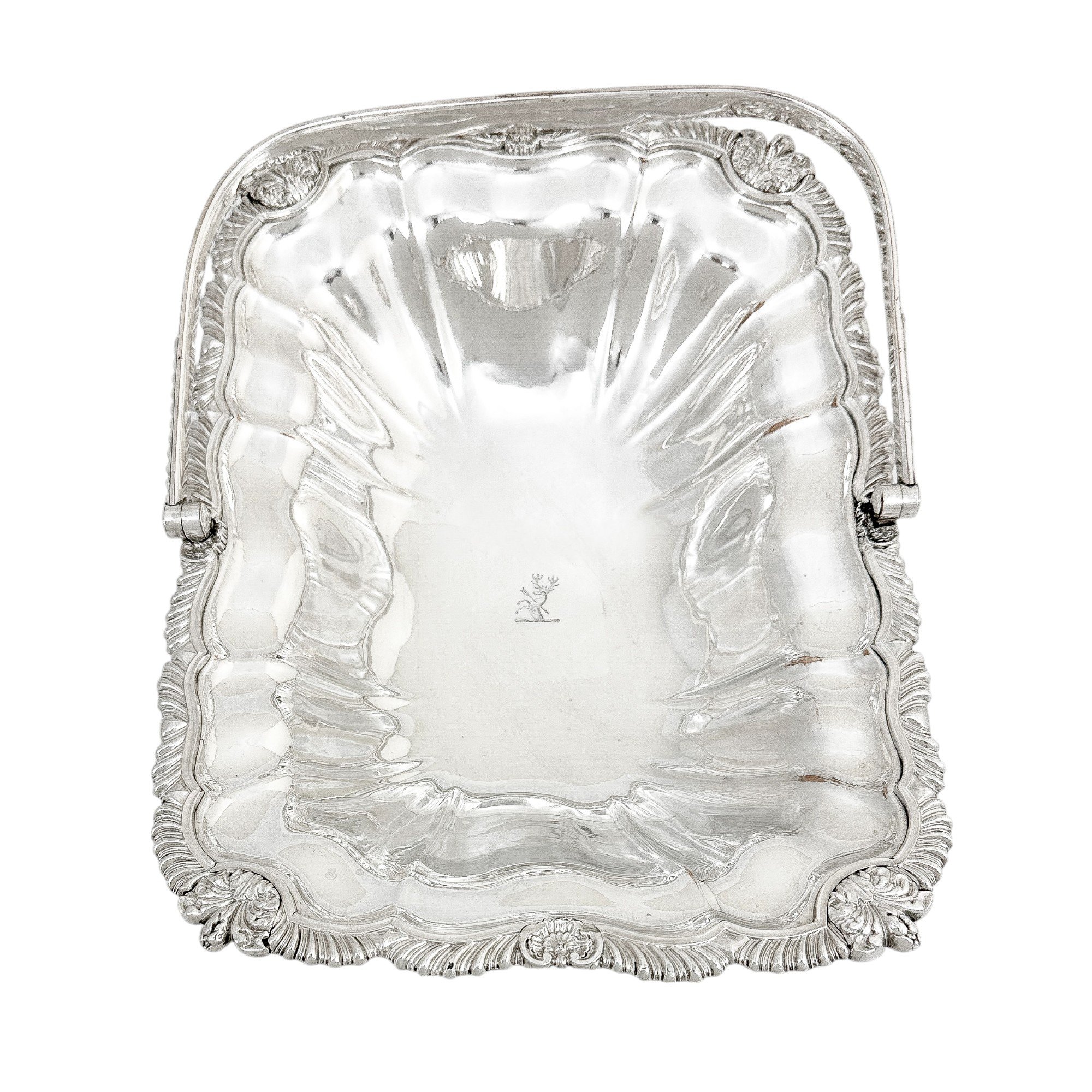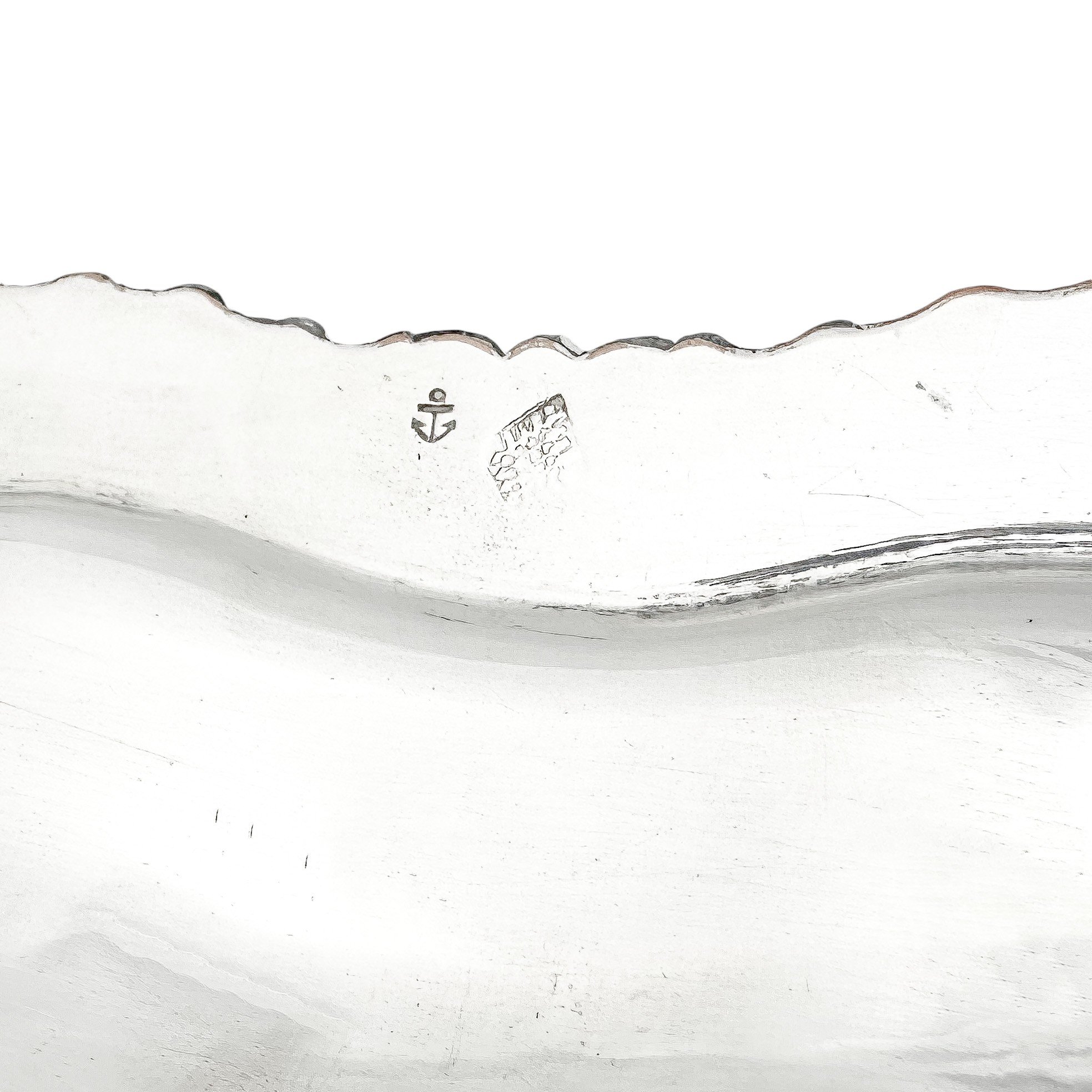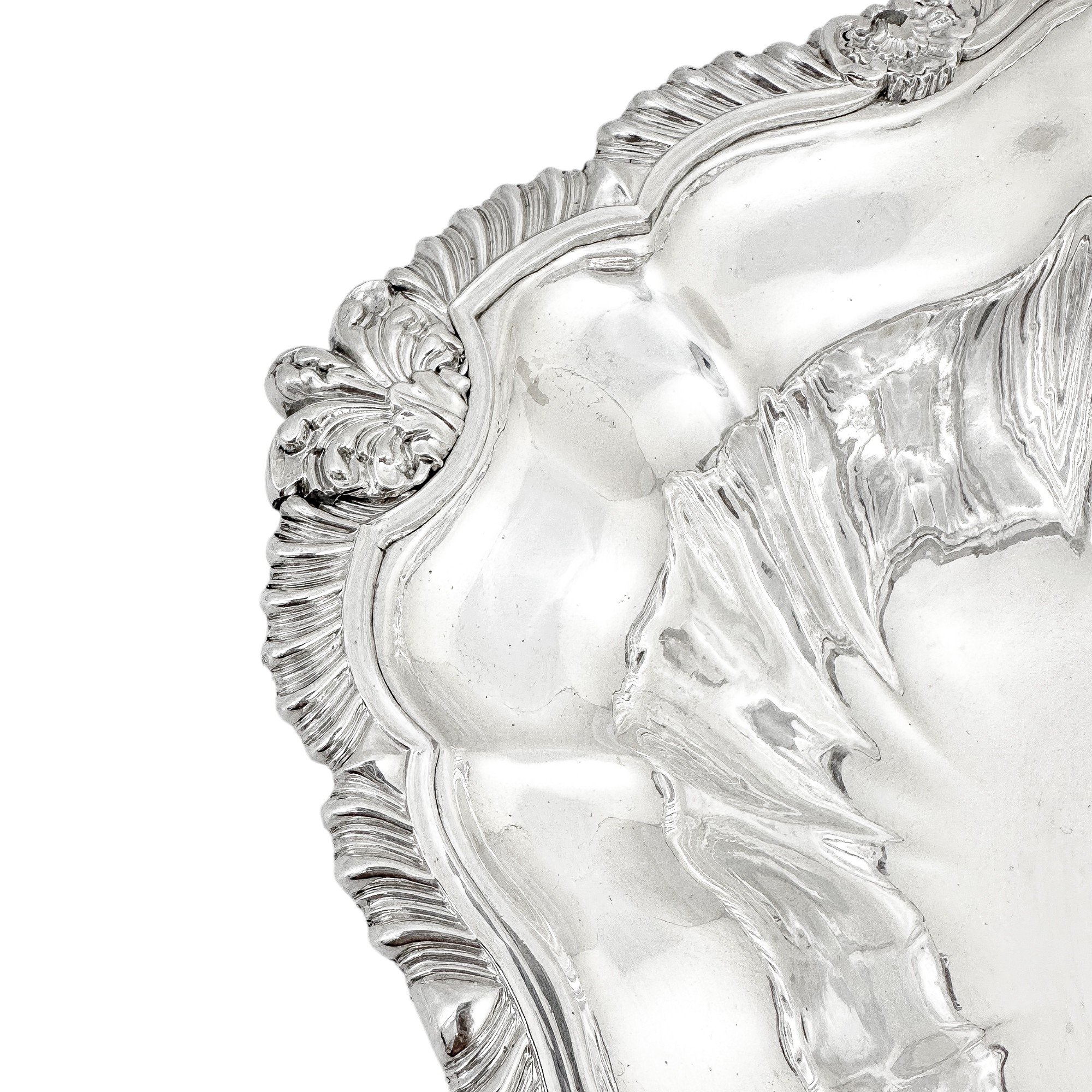 Image 1 of 8
Image 1 of 8

 Image 2 of 8
Image 2 of 8

 Image 3 of 8
Image 3 of 8

 Image 4 of 8
Image 4 of 8

 Image 5 of 8
Image 5 of 8

 Image 6 of 8
Image 6 of 8

 Image 7 of 8
Image 7 of 8

 Image 8 of 8
Image 8 of 8









George III Old Sheffield plate pair of large candlesticks on square bases
Early 19th century pair of large Old Sheffield silver plated dinner candlesticks. Inverted tapering columns are resting on stepped square bases. The candlesticks are embossed all over with a gadrooned design.
Very impressive and eye-catching candle holders that will add luxury to any dinner table.
Made in Sheffield, c. 1820's.
1902 g
28 cm tall
10 x 10 cm across the base
Very good antique condition. Copper bleeding commensurate with age; the nozzle edges are a bit uneven; few small dings; one base has a slightly pushed in corner, the other base has few indents along one side
Early 19th century pair of large Old Sheffield silver plated dinner candlesticks. Inverted tapering columns are resting on stepped square bases. The candlesticks are embossed all over with a gadrooned design.
Very impressive and eye-catching candle holders that will add luxury to any dinner table.
Made in Sheffield, c. 1820's.
1902 g
28 cm tall
10 x 10 cm across the base
Very good antique condition. Copper bleeding commensurate with age; the nozzle edges are a bit uneven; few small dings; one base has a slightly pushed in corner, the other base has few indents along one side
Early 19th century pair of large Old Sheffield silver plated dinner candlesticks. Inverted tapering columns are resting on stepped square bases. The candlesticks are embossed all over with a gadrooned design.
Very impressive and eye-catching candle holders that will add luxury to any dinner table.
Made in Sheffield, c. 1820's.
1902 g
28 cm tall
10 x 10 cm across the base
Very good antique condition. Copper bleeding commensurate with age; the nozzle edges are a bit uneven; few small dings; one base has a slightly pushed in corner, the other base has few indents along one side
Sheffield Plate, now known by collectors as "Old Sheffield Plate" was accidentally invented by Thomas Boulsover, of Sheffield's Cutlers Company, in 1743. While trying to repair the handle of a customer's silver knife, he heated it too much and the silver started to melt. When he examined the damaged handle, he noticed that the silver and copper had fused together very strongly. Experiments showed that the two metals behaved as one when he tried to reshape them, even though he could clearly see two different layers. Boulsover developed the technique of sandwiching an ingot of copper between two thin plates of silver, tightly binding it with wire and then heating it in a furnace. This was then milled into sheets from which objects were made.
The production of Sheffield Plate declined after 1840 when George Elkington invented electro silver plating which is why genuine Old Sheffield Plate items are so rare and highly regarded. Furthermore, electroplating tends to produce a "brilliant" surface with a hard colour – as it consists of pure rather than sterling silver and is usually deposited more thinly which causes it to lose silvering much quicker than Old Sheffield ware that still retains its beauty 250 years down the line.















